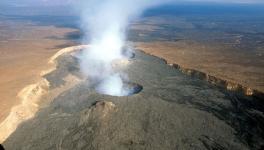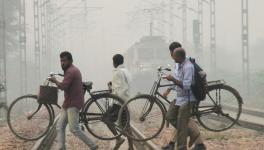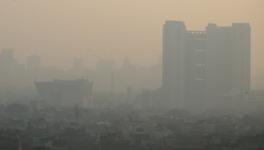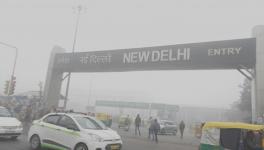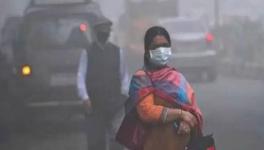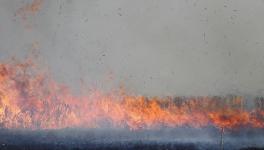Delhi Records Season’s Worst Air Quality, Stricter Steps in Offing
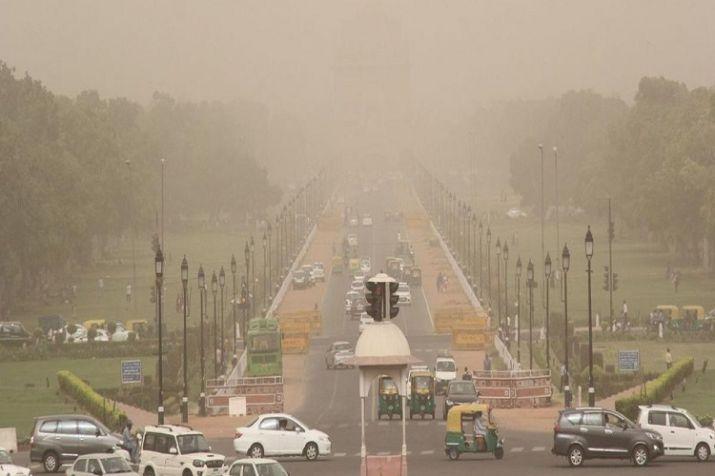
Image Courtesy: India Today
New Delhi: Two days before Diwali, the national capital's air quality dropped to season's worst on Friday, with the decreased wind speed leading to accumulation of pollutants and affecting dispersion.
The Supreme Court-mandated Environment Pollution (Prevention and Control) Authority is expected to take a call on Friday on several recommendations made by a 10-member anti-pollution task force.
The recommendations include banning construction work at night in Delhi-National Capital Region from October 26 to 30 and closure of industries that have not switched to piped natural gas.
The city's overall air quality index (AQI) stood at 315 at 8:30 am on Friday, while it was 311 on Thursday evening.
Most of the places in the national capital recorded the AQI in the "very poor" category, while the situation inched towards "severe" in some areas.
The AQI in Nehru Nagar, Ashok Vihar, Jahangirpuri, Rohini, Wazirpur, Bawana, Mundka and Anand Vihar was 340, 335, 339, 349, 344, 363, 381 and 350, respectively, according to Central Pollution Control Board's data.
The AQI in the neighbouring towns of Baghpat, Ghaziabad, Greater Noida, Gurgaon, and Noida was 312, 336, 311, 312 and 320, respectively.
An AQI between 0 and 50 is considered 'good', 51 and 100 'satisfactory', 101 and 200 'moderate', 201 and 300 'poor', 301 and 400 'very poor', and 401 and 500 'severe'.
The Ministry of Earth Sciences' air quality forecast and research service, SAFAR, said, "The decrease in wind speed has started to negatively influence Delhi's air quality by drastically decreasing ventilation coefficients and thereby affecting dispersion."
Calm surface winds will continue for the next two days. Consequently, the AQI is predicted to oscillate between high and middle range of the "very poor" category, it said.
The System of Air Quality and Weather Forecasting and Research (SAFAR) said another western disturbance is likely to affect the western Himalayan region by October 28. In view of this, the situation on Diwali may not be as bad as last year.
A 10-member task force on the Graded Response Action Plan recommended on Thursday that construction activities in Delhi and satellite towns of Gurgaon, Faridabad, Noida, Greater Noida, Ghaziabad, Sonepat and Bahadurgarh be banned between 6 p.m and 6 a.m from October 26 to October 30.
The task force, headed by Central Pollution Control Board Member Secretary, Prashant Gargava, also recommended closure of coal-based industries, barring power plants, in these satellite towns during the period.
Industries Without Piped Gas Barred
"In Delhi, industries which have not yet shifted to piped natural gas will remain closed from October 26 to 30," it said and asked all implementing agencies to take strict action for checking stubble burning in Punjab and Haryana and ensure enforcement of the Supreme Court's directions regarding firecrackers and impound "visibly" polluting vehicles.
All these measures are part of the CPCB-formulated Graded Response Action Plan, which lists stricter anti-pollution measures to be followed according to the severity of the situation.
Green firecrackers, developed by a gamut of laboratories led by CSIR-NEERI, have finally hit the markets, albeit in less quantity, mainly due to delay in finalising chemical compositions and granting manufacturing licences.
With Delhi's air quality plummeting to dangerous levels around Diwali every year, the Supreme Court last year banned polluting firecrackers and ordered that only green firecrackers, which cause 30 per cent less pollution, can be manufactured and sold.
The Delhi government has also prepared a dust action plan, under which officials have been regularly visiting construction sites, ensuring sprinkling of water to prevent dust emission and carrying out immediate repair of roads, according to Delhi Environment Minister Kailash Gahlot.
The Delhi government is also going to distribute five million N95 anti-pollution masks to students in government and private schools.
The CPCB also has a 15-day plan for the critical period between November 1 and November 15, when pollution levels are maximum in Delhi-NCR, in the works.
Get the latest reports & analysis with people's perspective on Protests, movements & deep analytical videos, discussions of the current affairs in your Telegram app. Subscribe to NewsClick's Telegram channel & get Real-Time updates on stories, as they get published on our website.









